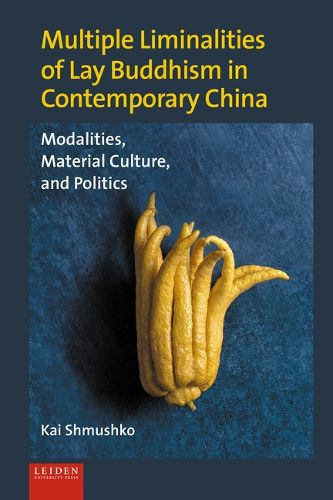Readings Newsletter
Become a Readings Member to make your shopping experience even easier.
Sign in or sign up for free!
You’re not far away from qualifying for FREE standard shipping within Australia
You’ve qualified for FREE standard shipping within Australia
The cart is loading…






In the past decades, various forms of Buddhism have emerged in-between, above, and beyond conventional conceptions of religious and spiritual life in China. This book is a qualitative study exploring manifestations of the massive revival of Buddhism among non-monastic people and communities. The book wishes to answer the central question: How do Chinese groups and individuals practice Buddhism under the socio-political and cultural circumstances of contemporary China? This inquiry is based on a sample of case studies from the People's Republic of China (PRC) and the Republic of China (Taiwan, ROC), exploring Buddhist communities, individual practitioners, materials, spaces, practice modalities and relationships. Each chapter examines a significant paradigm that plays a role in the revival of Buddhism in China, highlighting how lay practitioners negotiate their spaces, resources, moral and ethical beliefs, and values, in the face of rapid societal changes. The research reveals how state policies, economic shifts, local trends, and global developments, such as environmental concerns and technological advances impact and transform older Buddhist traditions. Overall, the author argues for the concept of multiple liminalities as a framework to describe the contemporary predicament of lay Buddhism in Chinese societies. Accordingly, lay Buddhist actors occupy liminal positions or operate across ambiguous boundaries where realms of in-betweenness, serve as avenues for religious responses to the complex challenges Buddhism in China faces.
$9.00 standard shipping within Australia
FREE standard shipping within Australia for orders over $100.00
Express & International shipping calculated at checkout
In the past decades, various forms of Buddhism have emerged in-between, above, and beyond conventional conceptions of religious and spiritual life in China. This book is a qualitative study exploring manifestations of the massive revival of Buddhism among non-monastic people and communities. The book wishes to answer the central question: How do Chinese groups and individuals practice Buddhism under the socio-political and cultural circumstances of contemporary China? This inquiry is based on a sample of case studies from the People's Republic of China (PRC) and the Republic of China (Taiwan, ROC), exploring Buddhist communities, individual practitioners, materials, spaces, practice modalities and relationships. Each chapter examines a significant paradigm that plays a role in the revival of Buddhism in China, highlighting how lay practitioners negotiate their spaces, resources, moral and ethical beliefs, and values, in the face of rapid societal changes. The research reveals how state policies, economic shifts, local trends, and global developments, such as environmental concerns and technological advances impact and transform older Buddhist traditions. Overall, the author argues for the concept of multiple liminalities as a framework to describe the contemporary predicament of lay Buddhism in Chinese societies. Accordingly, lay Buddhist actors occupy liminal positions or operate across ambiguous boundaries where realms of in-betweenness, serve as avenues for religious responses to the complex challenges Buddhism in China faces.